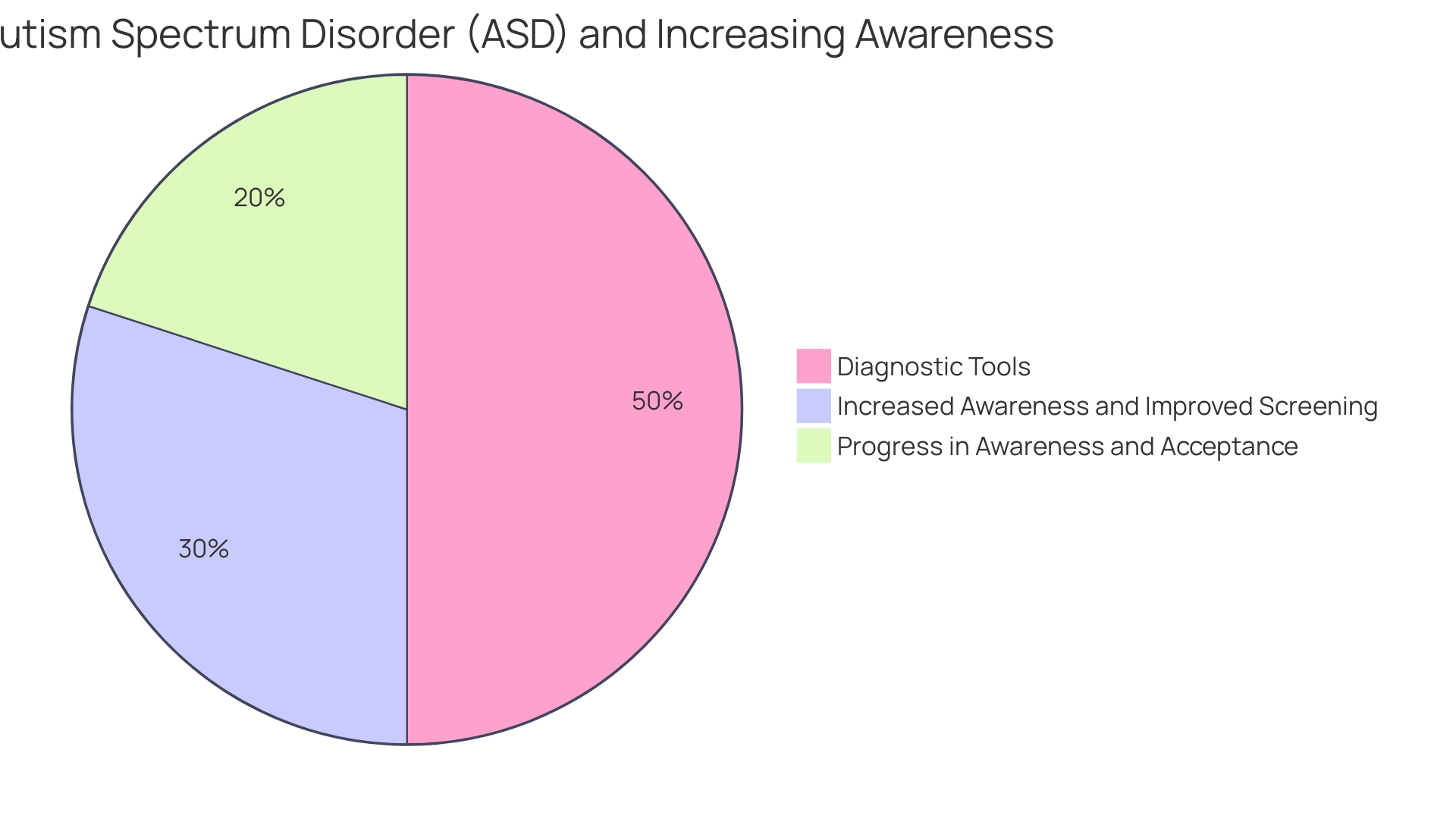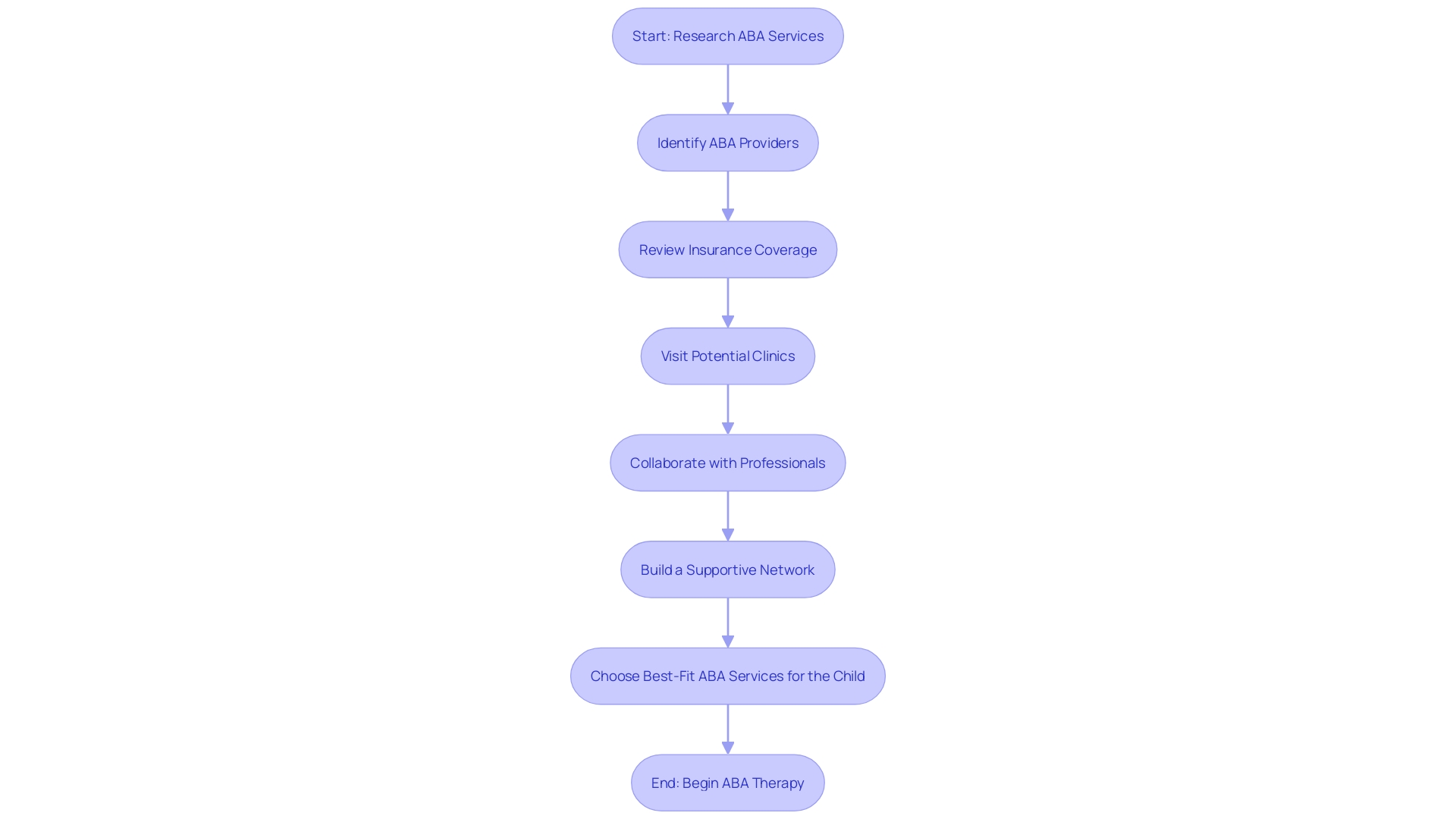Introduction
Applied Behavior Analysis (ABA) is a transformative and scientifically validated approach that has been improving the lives of individuals with autism and ADHD. By employing evidence-based techniques, ABA therapy aims to teach new skills, diminish challenging behaviors, and bolster social interactions. This methodical practice involves deconstructing complex behaviors into smaller, manageable steps, allowing therapists to assess and adjust behavior patterns effectively.
Experts in the field emphasize the importance of customized care and the role of technological advancements in enhancing the coordination and quality of care for individuals with autism and ADHD. With a deep understanding of direct patient care and care management, they advocate for best practices that cater to the unique needs of each child.
Statistics reflect a significant shift in the prevalence of autism diagnoses, indicating a rise from 1 in 2,500 to 1 in 36 over the years. This underscores the necessity for tailored approaches like ABA that can address the diverse spectrum of autism, rather than a one-size-fits-all tactic.
Amidst evolving perspectives on treatment, the use of ABA therapy remains a subject of extensive research and discussion. Understanding ABA's principles and techniques is crucial for parents and caregivers. It empowers them to make informed decisions about the support services their children receive, ensuring that each child's individual needs are met with the highest standard of care.
Understanding Applied Behavior Analysis (ABA)
Applied Behavior Analysis (ABA) is a transformative and scientifically validated approach that has been improving the lives of individuals with autism and ADHD. By employing evidence-based techniques, ABA therapy aims to teach new skills, diminish challenging behaviors, and bolster social interactions. This methodical practice involves deconstructing complex behaviors into smaller, manageable steps, allowing therapists to assess and adjust behavior patterns effectively.
Experts in the field, like a seasoned New York state-licensed and Board-Certified Behavior Analyst with over ten years of clinical experience, highlight the importance of customized care. This professional emphasizes the role of technological advancements in enhancing the coordination and quality of care for individuals with autism and ADHD. With a deep understanding of direct patient care and care management, they advocate for best practices that cater to the unique needs of each child.
Statistics reflect a significant shift in the prevalence of autism diagnoses, as observed by Dr. Jan Blacher, indicating a rise from 1 in 2,500 to 1 in 36 over the years. This underscores the necessity for tailored approaches like ABA that can address the diverse spectrum of autism, rather than a one-size-fits-all tactic.
Amidst evolving perspectives on treatment, the use of ABA therapy remains a subject of extensive research and discussion. Jonah Davids, a researcher and writer, contributes to this ongoing dialogue, exploring the intricacies of mental health care. His work, along with others in the field, provides valuable insights into the complexities of navigating the mental health landscape, particularly for those with autism and ADHD.
Understanding ABA's principles and techniques is crucial for parents and caregivers. It empowers them to make informed decisions about the support services their children receive, ensuring that each child's individual needs are met with the highest standard of care.

Benefits of ABA Therapy
ABA therapy, recognized for its individualized and adaptive approach, provides a cornerstone for enhancing the lives of children with autism and ADHD. The therapy's strength lies in its ability to be customized to the unique requirements of each child, ensuring that critical life, communication, and social skills are developed while fostering independence. Furthermore, ABA therapy is instrumental in mitigating challenging behaviors, encouraging the adoption of suitable, beneficial behaviors in their place.
The therapy's efficacy is underscored by a New York state-licensed and Board-Certified Behavior Analyst with over ten years of clinical expertise. This professional emphasizes the importance of meticulous assessments and personalized goal-setting by a qualified BCBA, ensuring that progress is continuously monitored and strategies refined for optimal benefit. The flexibility of ABA therapy caters to the diverse needs and schedules of families, highlighting that the child's environment, inclusive of family dynamics, is integral to the therapeutic process.
Recent updates to the ABA Practice Guidelines by the Council of Autism Service Providers underline the need for high-quality, evidence-based care. With the release of new standards, there is an impetus on ensuring ABA therapy is delivered with excellence, aligning with the latest in clinical research to maximize positive outcomes for children. As the research landscape evolves, so does the approach to ABA therapy, moving towards more robust, randomized controlled trials to validate its effectiveness.
In summary, ABA therapy stands as a transformative tool for children with autism and ADHD, backed by a commitment to best practices and coordinated care. Families seeking support services can be assured that ABA therapy is not just about addressing the needs of the child but is a holistic approach involving the entire family for comprehensive care.
Components of an Effective ABA Program
A comprehensive approach to ABA therapy is critical for supporting children with developmental challenges. A seasoned New York state-licensed and Board-Certified Behavior Analyst emphasizes that the program must begin with a meticulous assessment to pinpoint the child's particular strengths and areas for growth. This assessment is the cornerstone of developing an individualized treatment plan tailored to the child's specific needs, incorporating cutting-edge technology solutions to ensure coordinated and high-quality care.
Furthermore, the treatment plan is not static; it's a dynamic blueprint that evolves through continual data collection. This data-driven method allows for the meticulous monitoring of the child's progress and the flexibility to adapt strategies as needed. Such bespoke tactics are vital in light of the diverse spectrum of autism, as noted by Dr. Jan Blacher, a research professor at UC Riverside, who underscores the significant shift in understanding autism's complexity.
It's not a one-size-fits-all condition; hence, interventions must be just as nuanced and varied.
Key to the success of ABA therapy is the strategic use of positive reinforcement, encouraging and rewarding desired behaviors to inspire children to adopt appropriate actions. Moreover, the goal is to achieve generalization – enabling children to transfer and apply the skills they acquire across different environments and situations. This holistic view extends beyond the child to the entire family, recognizing that support should be inclusive of the family's needs and schedules.
In the context of ever-evolving treatment modalities, it's essential to note that not all practices are universally accepted. For example, the Judge Rotenberg Center's use of electric shock devices on clients has sparked a significant debate on treatment ethics. Advocates argue such measures are lifesaving when other options have failed, highlighting the complex decisions parents and caregivers must navigate when selecting interventions.
In summary, an effective ABA program is one that is thoroughly assessed, individualized, data-informed, flexible, and family-centered, ensuring that children with autism and other developmental challenges can thrive in all areas of life.
Finding ABA Services Near You
Exploring Applied Behavior Analysis (ABA) services for children with autism and ADHD involves several critical steps to ensure the best fit for your child's unique needs. Start with a comprehensive research process, identifying ABA providers in your vicinity. This may involve reading through reviews, tapping into the collective wisdom of other parents, and seeking guidance from seasoned professionals in the field.
A New York state-licensed and Board-Certified Behavior Analyst, with a wealth of experience across treatment settings, emphasizes the importance of best practice and high-quality care which can be pivotal in your decision-making process.
Ensure you're well-informed about your insurance policy, as it may have provisions for ABA therapy coverage, including specific in-network providers. This knowledge is a cornerstone for accessing essential services without undue financial burden. When you're ready to visit potential ABA clinics, it's crucial to scrutinize their facilities, interact with the therapists, and get a clear understanding of their therapeutic approaches.
Inquire about their experience, qualifications, and success rates to gain confidence in their ability to support your child's development.
Collaborating with professionals who regularly engage with children with autism and ADHD, such as pediatricians, psychologists, or educators, can offer invaluable insights. They are often familiar with the local landscape of ABA services and can recommend providers known for their effective care. As highlighted in recent news, family members and kinship caregivers are increasingly recognized for their role in the care of children with special needs, with new federal rules advocating for standards that support their efforts.
This underscores the importance of a supportive network in achieving positive outcomes for children.
By diligently following these steps, you can secure ABA services that not only meet your child's needs but are also within reach, contributing to their growth and well-being.

Conclusion
In conclusion, ABA therapy is a transformative and scientifically validated approach that improves the lives of individuals with autism and ADHD. By employing evidence-based techniques, ABA therapy teaches new skills, diminishes challenging behaviors, and bolsters social interactions. It deconstructs complex behaviors into manageable steps, allowing therapists to assess and adjust behavior patterns effectively.
Customized care and the use of technology play crucial roles in enhancing the coordination and quality of care for individuals with autism and ADHD. The rising prevalence of autism diagnoses underscores the need for tailored approaches like ABA that address the diverse spectrum of autism, rather than a one-size-fits-all tactic.
Understanding ABA's principles and techniques empowers parents and caregivers to make informed decisions about the support services their children receive. ABA therapy provides a cornerstone for enhancing the lives of children with autism and ADHD. It is individualized, adaptive, and mitigates challenging behaviors while fostering independence.
A comprehensive approach to ABA therapy is critical, starting with a meticulous assessment to develop an individualized treatment plan. The treatment plan evolves through continual data collection, allowing for the adaptation of strategies. Positive reinforcement and generalization are key components, inspiring children to adopt appropriate behaviors and transfer their skills across different environments.
Finding ABA services involves comprehensive research, understanding insurance coverage, and interacting with therapists. Collaborating with professionals and building a supportive network contributes to positive outcomes for children.
In summary, ABA therapy is a transformative tool supported by best practices and coordinated care. Understanding its principles empowers parents and caregivers to make informed decisions and ensure the well-being of their children. By following a comprehensive approach and seeking the right services, families can support their child's growth and development in all areas of life.




